International Trade - chapter 17
17.1. Comparative Advantage
- Comparative advantage is the ability to produce a good or service at a lower opportunity cost than others can
- Absolute advantage is the ability to produce more of a good than others can with a given amount of resources
- It is comparative advantage, rather than absolute advantage, that determines which goods for trade
- The most efficient economic arrangement is one in which each country specializes in the good for which it has a comparative advantage and trades with others
- Characteristics such as climate, natural resources, factor endowment, and technology determine which goods and services a country will have a comparative advantage at producing
- Because features like climate, population, and technology aren’t uniform throughout an entire country, incomplete specialization, in which a country produces some of many different kinds of goods, can also be efficient
17.2. And 17.3. Becoming a Net Importer
- When a country moves from autarky to trade, the difference between the world price and the domestic price of a good determines whether the country becomes a net importer or net exporter
- Autarky: an economy that is self-contained and does not engage in trade with outsiders
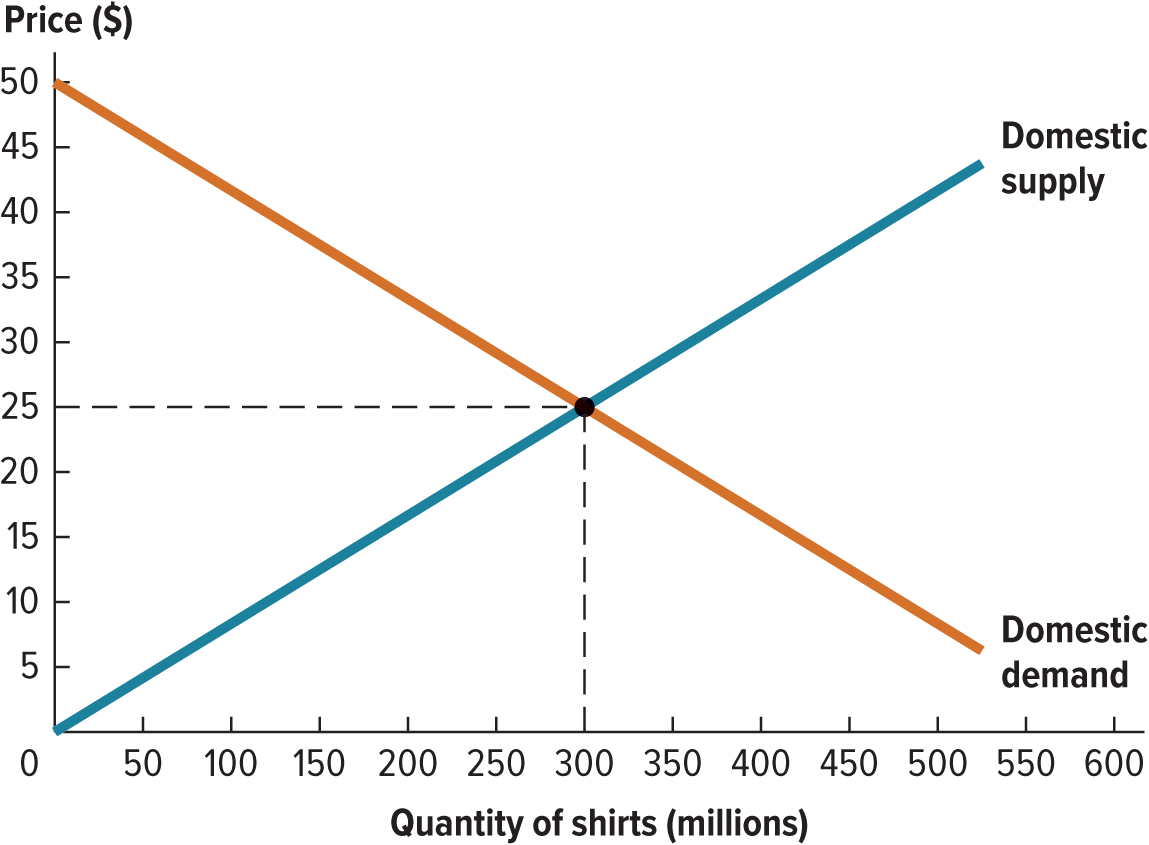
- If the world price is lower than the domestic price, the domestic price will drop when the country opens to trade
- In that case, domestic supply will no longer be sufficient to meet domestic demands at the lower price
- Imported goodwill make up the difference, and the country will become a net importer
- If the world price is higher than the domestic price, the domestic price will rise when the country opens up to trade
- Domestic supply will outstrip domestic demand at the higher piece, and the country will export the excess supply, becoming a net exporter
- Imports: goods and services that are produced in other countries and consumed domestically
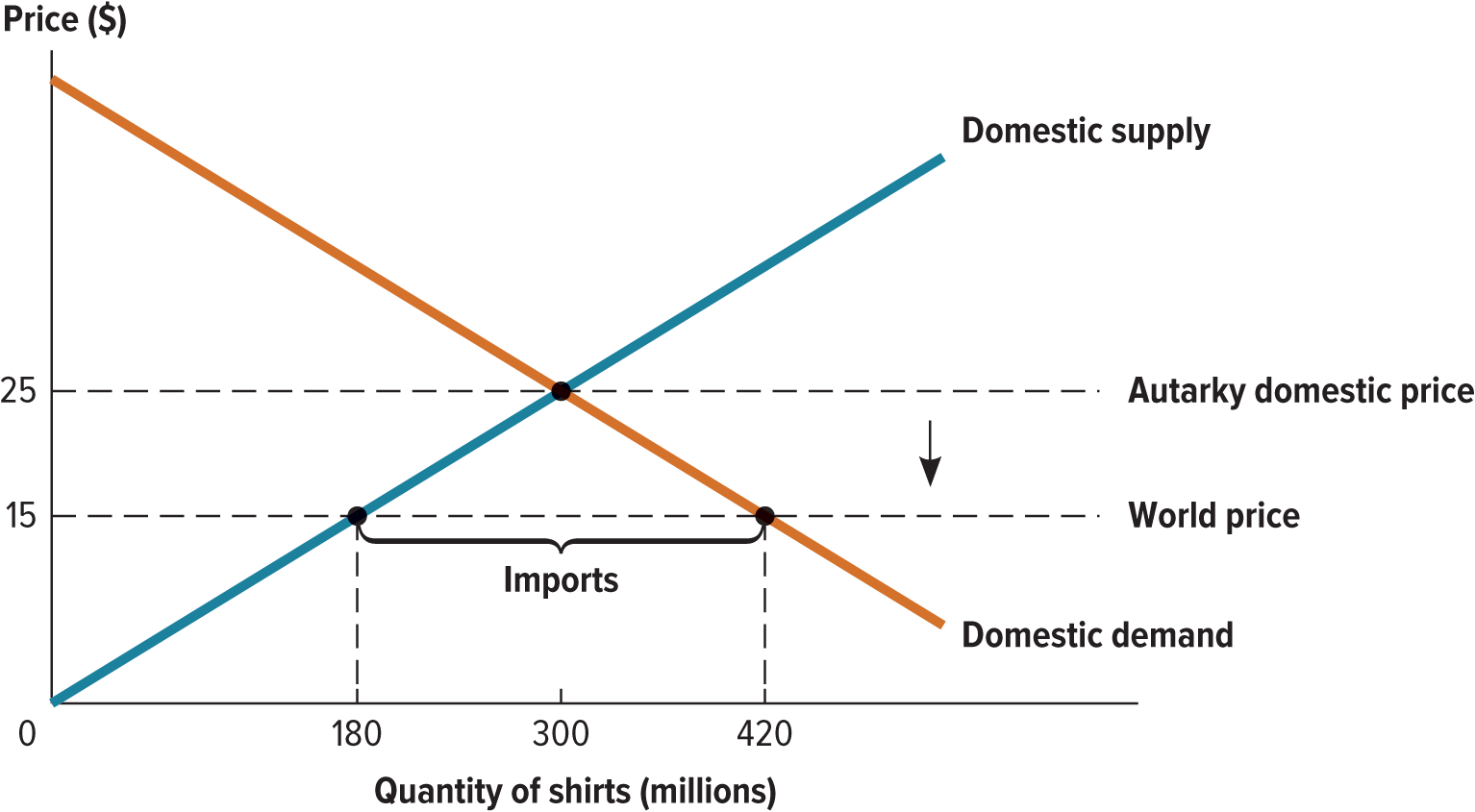
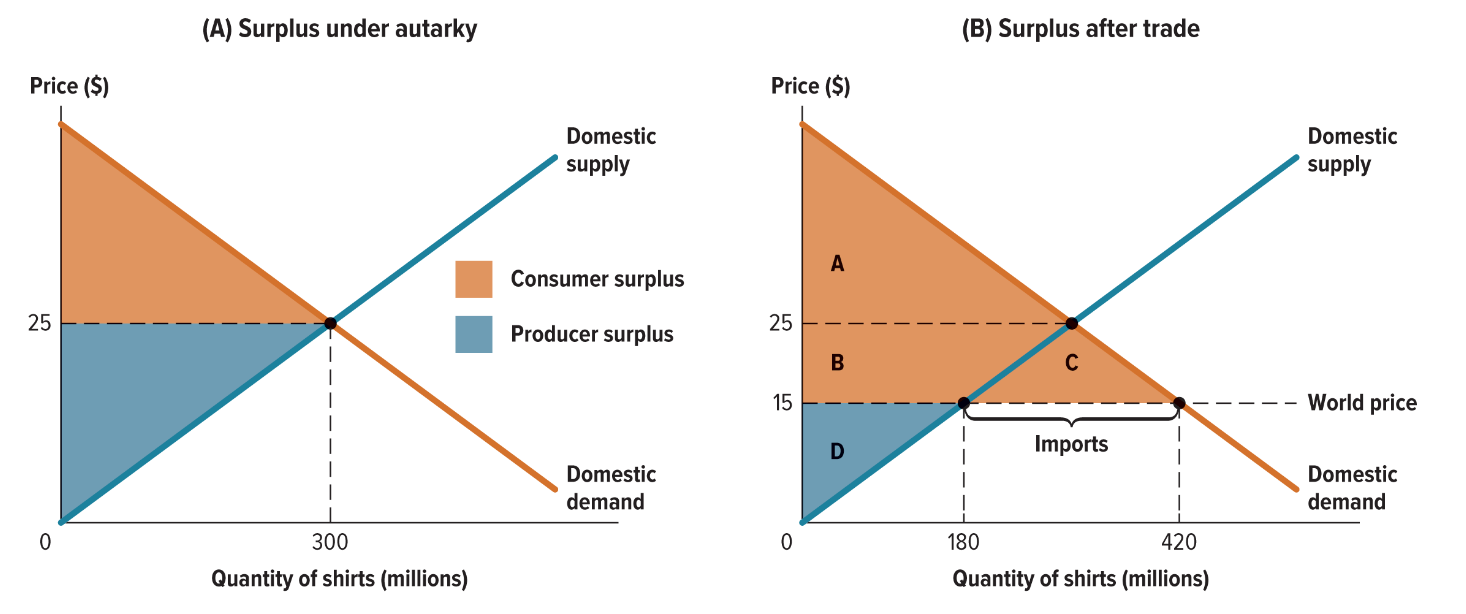
- Exports: goods and services that are produced domestically and consumed in other countries
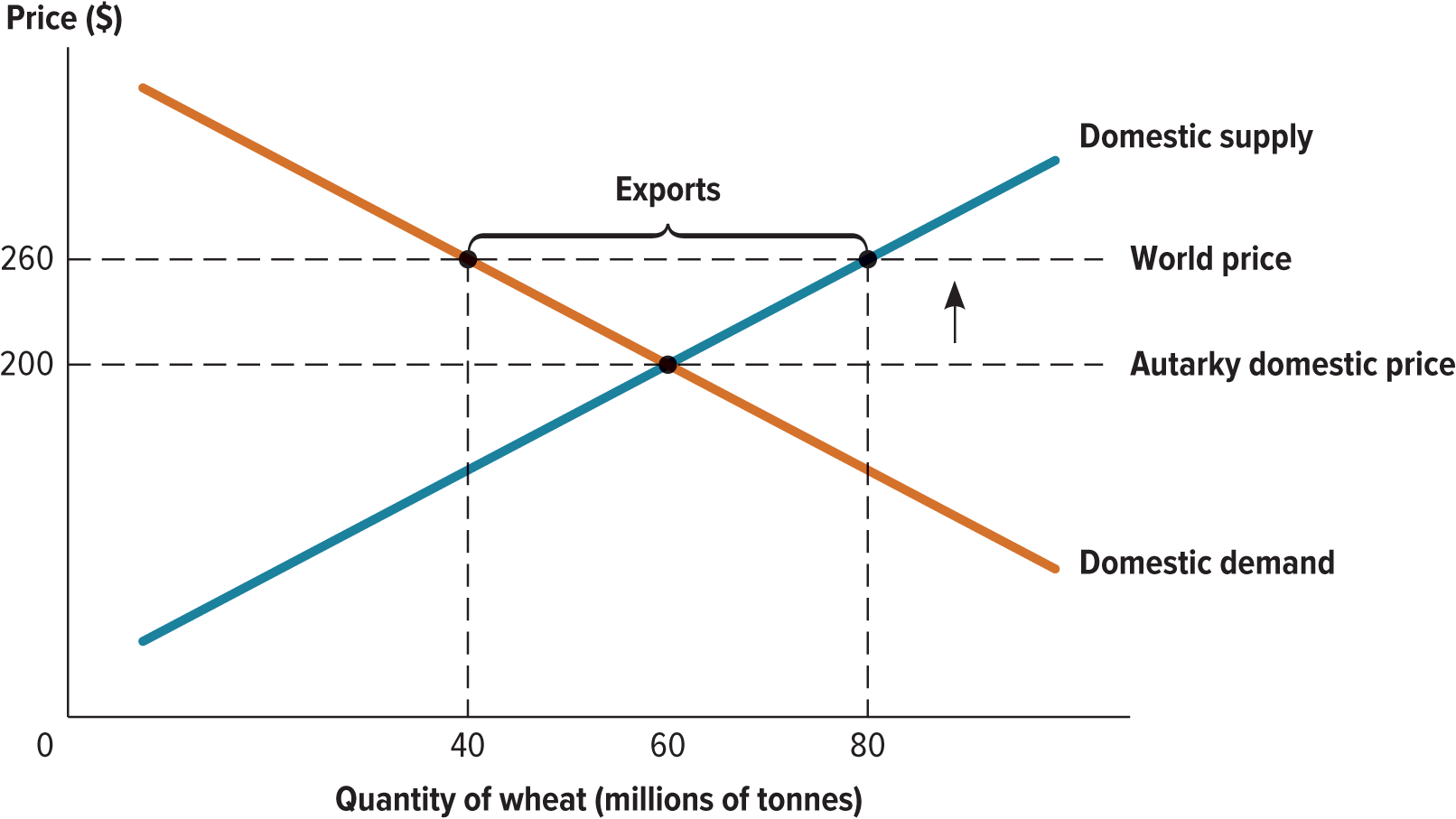
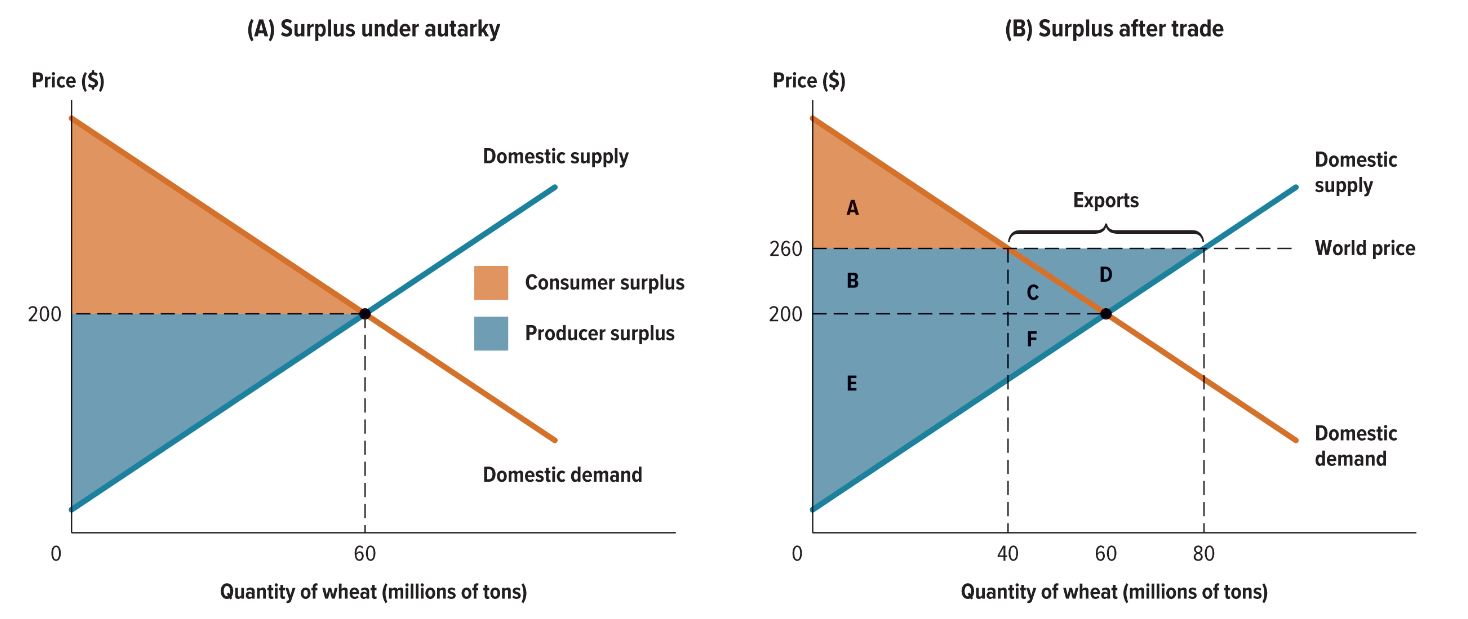
- When markets function well, total surplus increases when a country opens up to rade
- The domestic distribution of surplus depends on whether the country becomes a net importer or net exporter of the good being traded
- In net importing countries, consumers gain surplus from buying a larger quantity at a lower price; producers lose surplus from selling less at a lower price
- When a country becomes a net exporter, consumers lose surplus from buying a smaller quantity at a higher price; producers gain surplus
- In both cases, total surplus increases, making trade more efficient than autarky
17.4. Big Economy, Small Economy
- Our previous examples hold only if the economy in question us a price taker
- The decisions of its citizens about what quantity to produce or consume have no effect on the world price
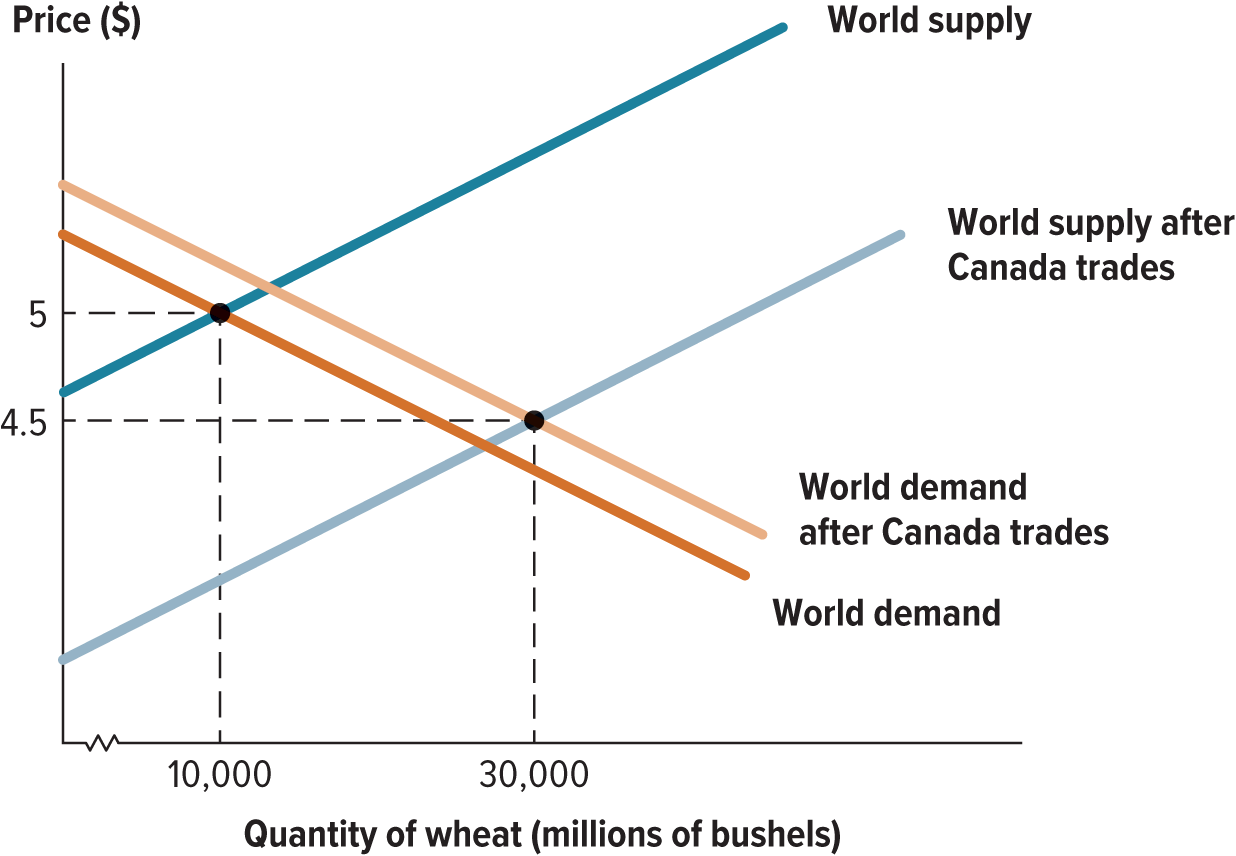
- If we are dealing with a “big” economy, its decisions would affect the world price
- The economy’s move from autarky to free trade would
- shift the world demand curve to the right because more consumers have entered the world market
- shift the world supply curve to the right because more producers have entered the world market
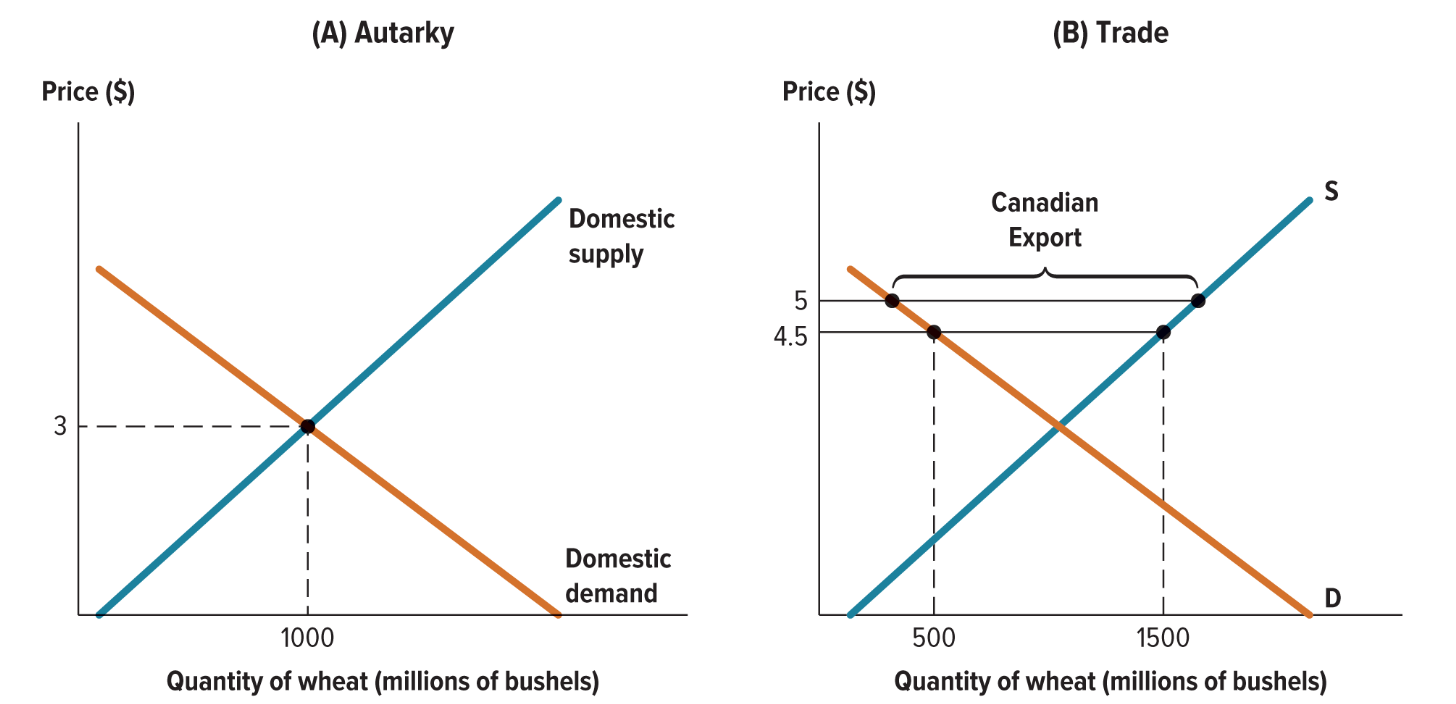
- Protectionism: a preference for policies that limit trade
- trade liberalization: policies and actions that reduce trade restrictions
17.5. Tariffs
- In order to raise public funds and redistribute surplus toward domestic producers, governments use import tariffs
- Tariff: a tax on imported goods which causes inefficiency and deadweight loss
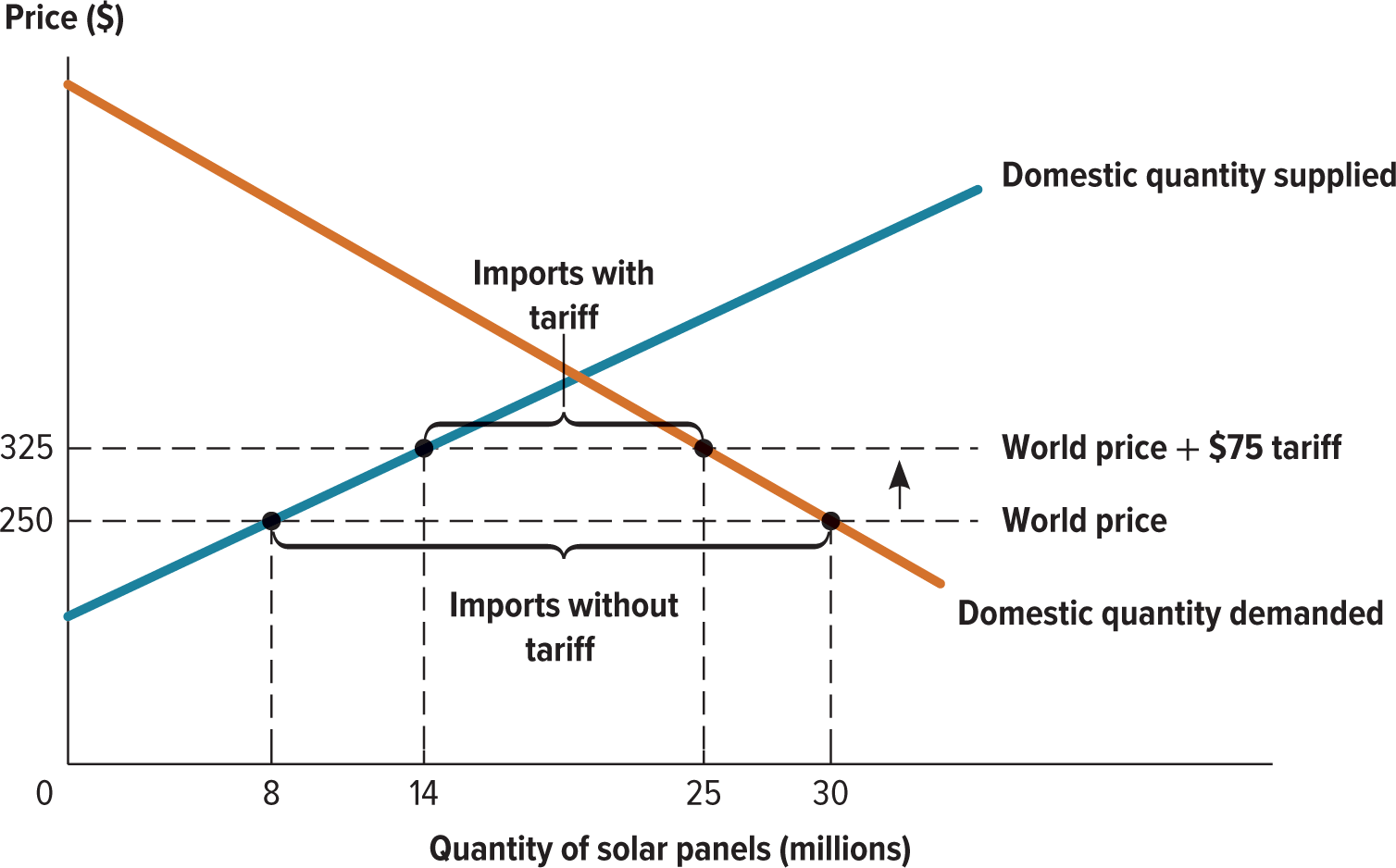
- A tariff raises the domestic price of a good, causing a reduction in the quantity demanded, an increase in the quantity supplied domestically, and a reduction in the quantity imported
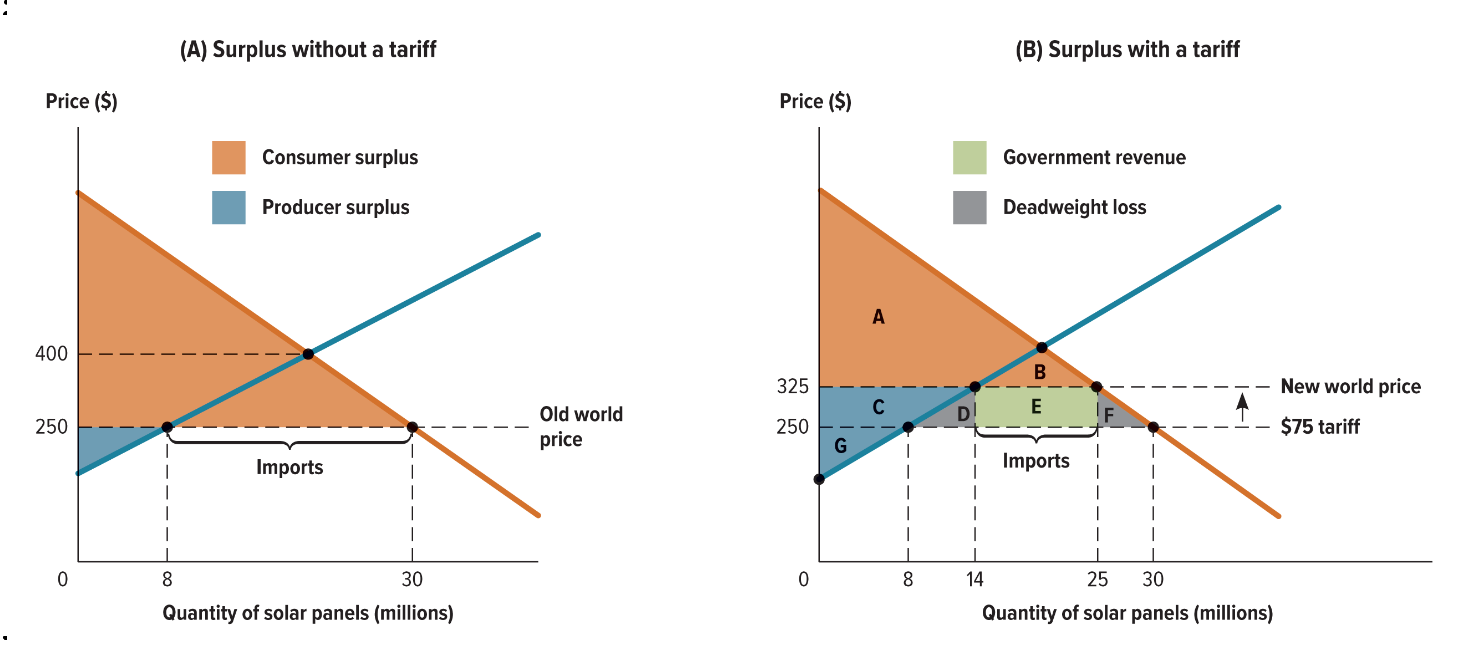
- Domestic producers will enjoy an increase in surplus as a result of selling more at a higher price, and government will receive tax revenue
- Domestic consumers lose surplus as a result of buying less at a higher price, and total surplus decreases
17.6. Quotas
- import quota: a limit on the amount of a particular good that can be imported
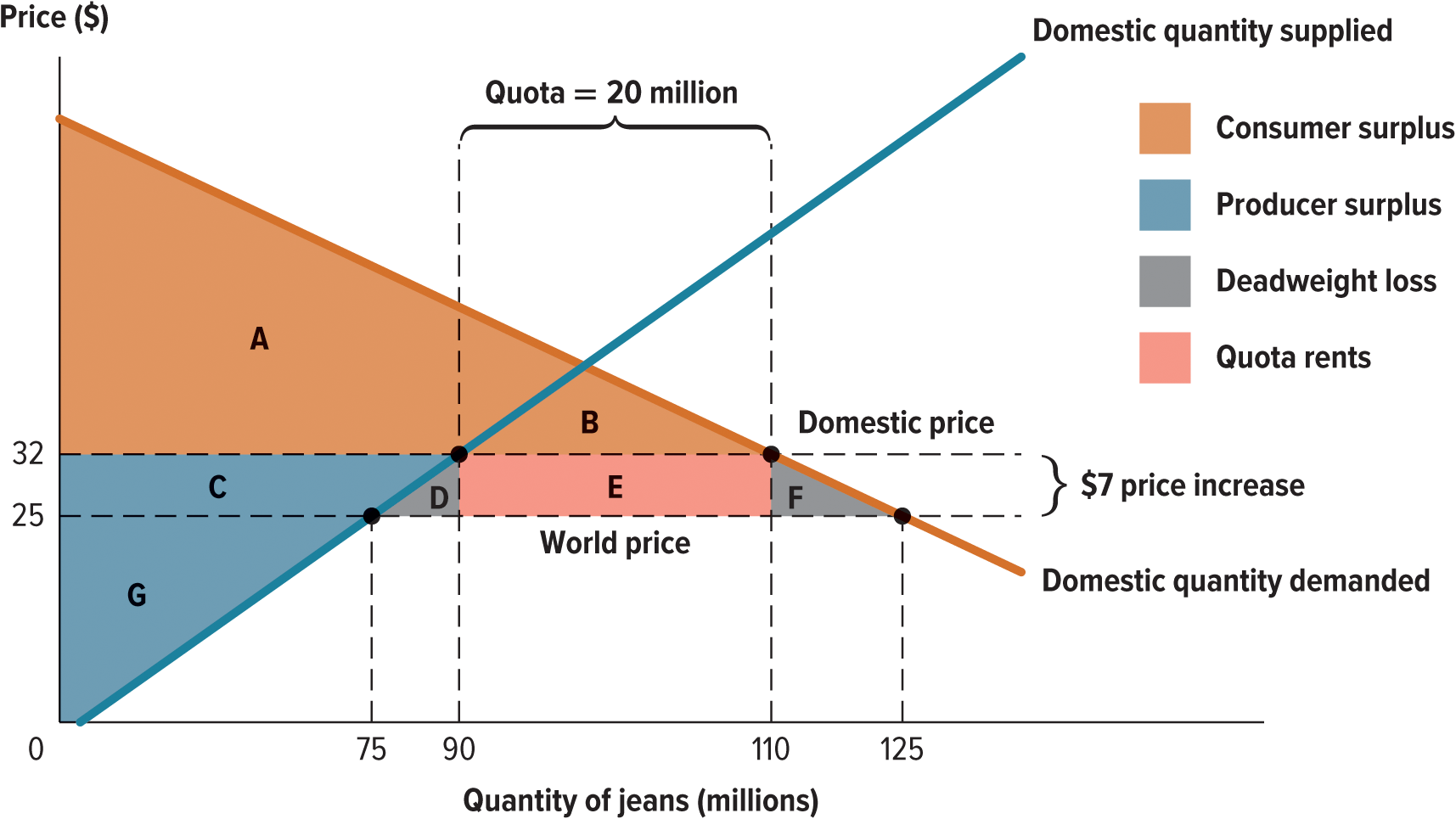
- The effect of a quota on domestic price and quantity is similar to the effect of a tariff: domestic price increases, quantity imported decreases
- Domestic producers gain surplus from selling at a higher price; domestic consumers lose surplus from buying a lower quantity at a higher price
- quota rents: the profits earned by the holders of import rights under a quota
17.7. International Labour and Capital
- International trade equalizes the supply and demand factors of production across countries
- In general, trade increases demand for factors that are domestically abundant, and it increases the supply of factors that are domestically scarce
- The price of domestically scarce factors will typically drop due to increased foreign competition, and the owners of these factors lose surplus
- In contrast, the price of domestically abundant factors increases due to increased demand, and owners will gains surplus
- World Trade Organization (WTO): an international organization designed to monitor and enforce trade agreements, while also promoting free trade
- Embargo: a restriction or prohibition of trade in order to put political pressure on a country
17.8. Labour and Environmental Standards
- Each country has its own set of laws and policies governing the economy
- These regulations vary among countries, which can be a source of friction when economic activity takes place across national boundaries
- Policymakers and consumers approach the problem of inconsistent standards in several ways, ranging from explicit laws about imports to voluntary purchasing decisions by consumers